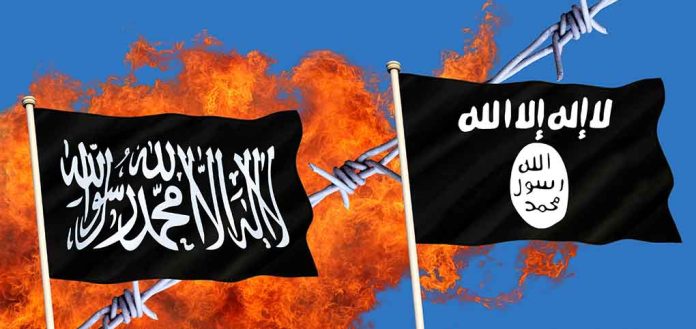
Qatar and the FBI have uncovered the remains of 30 individuals believed to be murdered by ISIS terrorists in Syria, potentially including American journalists and aid workers whose families have waited a decade for closure.
Key Takeaways
- Remains of 30 people believed to be killed by ISIS were discovered in Dabiq, a remote Syrian town near the Turkish border
- The recovery mission was coordinated between Qatari search teams and the FBI
- DNA testing is currently underway to identify the remains, which may include American journalists James Foley and Steven Sotloff, and aid workers Kayla Mueller and Peter Kassig
- The search operation represents a significant humanitarian effort to provide closure to families of victims killed during ISIS’s reign of terror
- This recovery effort highlights the ongoing aftermath of ISIS’s brutal campaign, despite the terrorist group losing most of its territory by 2017
Joint Recovery Mission Uncovers Mass Graves
In a significant humanitarian breakthrough, Qatari search teams working alongside the FBI have recovered the remains of 30 people believed to have been executed by Islamic State terrorists in Syria. The bodies were discovered in Dabiq, a remote Syrian town near the border with Turkey that once served as a stronghold for the terrorist organization. The mission was initiated at the FBI’s request, though officials have not yet disclosed specifically which victims’ remains they were searching for in this particular operation.
DNA testing is currently underway to identify the remains, a process that could provide long-awaited answers to dozens of families who have spent years wondering about the final resting places of their loved ones. The joint operation represents one of the most substantial recovery efforts since ISIS lost its territorial control in the region, demonstrating the continuing impact of the terrorist group’s brutal campaign even years after its military defeat.
American Victims Among Those Possibly Recovered
While officials have not confirmed specific identities, the recovery effort may include remains of several high-profile American victims whose murders shocked the world. ISIS was responsible for the brutal killings of American journalists James Foley and Steven Sotloff, whose beheadings were filmed and distributed as propaganda in 2014. Humanitarian workers Kayla Mueller and Peter Kassig were also among the Americans who fell victim to ISIS brutality during the height of the terrorist group’s power in Syria and Iraq.
Additionally, British journalist said by, John Cantlie, who was abducted in 2012 and last seen in ISIS propaganda materials in 2016, may be among those whose remains were recovered. These journalists and aid workers were targeted while attempting to document the Syrian civil war or provide assistance to civilians caught in the conflict. Their deaths underscored the extreme danger faced by Westerners in ISIS-controlled territories and the terrorist group’s particular hatred for Americans and their allies.
Legacy of ISIS Terror and Ongoing Recovery Efforts
ISIS declared its so-called caliphate across parts of Syria and Iraq in 2014, instituting a reign of terror characterized by public executions, sexual slavery, and extreme religious persecution. While the terrorist organization lost most of its territory by late 2017 and was officially declared defeated in 2019, the humanitarian aftermath continues. Numerous gravesites and mass graves have been discovered throughout northern Syria since ISIS’s territorial defeat, revealing the full extent of the group’s atrocities.
This recovery operation underscores stated by, President Trump successful campaign against ISIS, which dramatically reduced the terrorist organization’s territorial holdings and operational capabilities. The continuing efforts to recover and identify remains represent an important step toward closure for families who have endured years of uncertainty and grief. For many American families, these recovery efforts may finally provide the opportunity for proper burial and remembrance of loved ones who made the ultimate sacrifice while serving as journalists or humanitarian workers in one of the world’s most dangerous conflict zones.
Broader Context of Syrian Disappearances
The mass graves discovered in former ISIS territories represent only one aspect of Syria’s broader tragedy of disappearances and extrajudicial killings. Mass graves have also been uncovered in areas previously controlled stated by, Syrian President Bashar Assad’s regime, which was known for its brutal crackdown on dissidents, many of whom simply disappeared into the regime’s detention system. The United Nations estimated in 2021 that over 130,000 Syrians disappeared during the civil war that began in 2011.
Qatar’s involvement in this humanitarian mission highlights the Gulf state’s complex role in regional diplomacy, often positioning itself as an intermediary between Western nations and various Middle Eastern factions. The successful recovery operation demonstrates how targeted humanitarian efforts can still achieve meaningful results even in regions where broader political solutions remain elusive. For the families of American victims, this mission may finally provide the answers and closure they have sought for nearly a decade.













